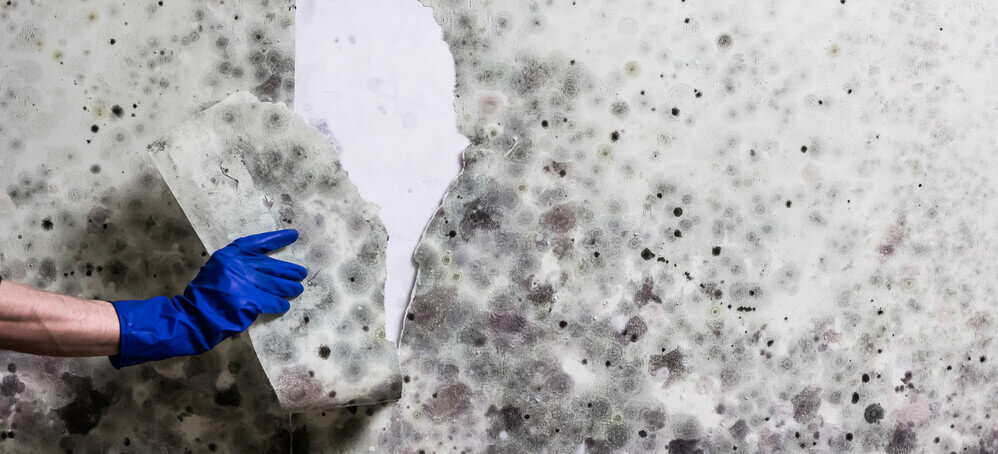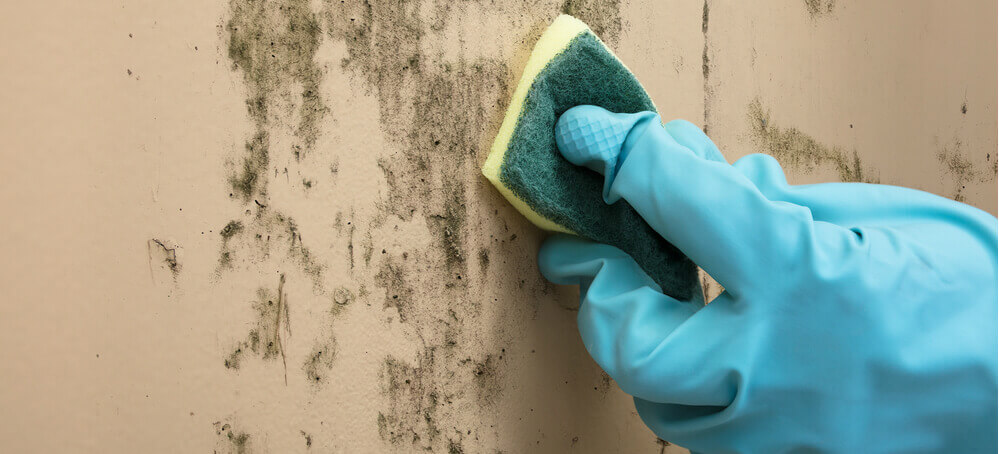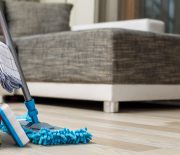Last update: 3 years ago

Mould is a nightmare for every homeowner. Not only unsightly, but mould can also cause allergic reactions and respiratory problems. Prolonged exposure to mould can be harmful, and thus as a homeowner, you should prioritise getting rid of mould as soon as possible. While we cannot control weather conditions and seasonal changes, we can do something about the humidity in our homes.
Mould is a common problem in many households, especially during humid weather conditions or after water damage incidents such as floods or leaks.It can cause severe health problems like allergies, asthma attacks, headaches, and respiratory infections if left unattended. Below you can find out how to get rid of mould naturally and without chemicals.
What is mould and types of mould
Indoor mould (or mildew) is a fungal growth that develops on wet materials. You probably have faced black and green mould, as they’re the most common household types. It feeds on dead particles, and while that’s an essential part of nature, no one wants it in their homes. You have a lot of organic material at home that mould can feed off – wallpaper, grime in the bathroom, and more. It colonises through spores that float in the air and land on surfaces. These airborne particles can be harmful to humans and animals if exposed long enough.
What are the most common causes of mould
When the “right” temperature, moisture and nutrients are available, the mould starts to develop. It likes damp, dark areas with plenty of moisture. That’s why it’s most often found in bathrooms, kitchens, basements, storage areas, and more.
Condensation
The most common cause of mould at home is condensation. When the warm, humid air of the home meets a cold surface, like the wall around windows, for example, it condenses and creates the perfect environment for mould to grow. You can help prevent mould from growing in your window tracks by grabbing an old towel and drying the window panes.
Leakage
Another cause for mould is leaking pipes. They might be concealed inside a wall, and the mould is only a fraction of the problem on the other side of the plaster! In this scenario, enlist the help of a qualified plumber to get to the bottom of the issue.
Poor ventilation
Let the fresh air circulate through the house as often as you can because poor ventilation keeps the humidity and the mould spores inside. Here is what you can do to improve air humidity at home:
- Bathroom. Consider installing an exhaust fan in your bathroom to draw the warm, humid air out. When the bathroom is not in use, you can leave the door or window open to let fresh air circulate. That will help dry out the shower cubicle and any other damp areas.
- Kitchen. Install a range hood over the cooktop and use it while cooking to prevent steam building up in the kitchen. If there is already a range hood, make sure it’s working properly and that the filters are clean.
- Entire home. If there’s a room in your house that regularly retains moisture and there’s no way to minimise that, investing in a moisture absorber might be your best move. Consider installing a ducted ventilation system that circulates dry air throughout your home all year round.
Natural methods for removing mould from your home

When cleaning mould, you should equip yourself with long rubber gloves, preferably with a mask covering your mouth and nose. You can also wear protective eyewear. You don’t want the spores near to irritate your eyes or cause you breathing problems or migraines. While cleaning open all windows. If the spores are going anywhere, it should be outside.
Natural remedies are effective ways to remove mould without exposing yourself or loved ones to harsh chemicals that may have long-term effects on your health. Natural products like vinegar, baking soda solution, and tea tree oil contain antifungal properties that work effectively against mould spores. For affected areas bigger than a square meter, we recommend you get a professional to clean the mould for you.
Get rid of mould with baking soda
- Prepare your cleaning solution. Mix baking soda with white vinegar and water, proportions 2:1:1. Stir the mixture until it becomes a thick paste.
- Apply the mixture on the affected surface and leave it like for a few minutes to dry.
- Scrub away the paste and grime and wipe with a clean cloth and water.
Get rid of mould with vinegar
- Get undiluted white vinegar and pour it in a spray bottle.
- Spray the vinegar on the mould growth and leave for around an hour.
- Wipe away using water and clean cloth.
- Repeat if there is still mould residue.
- Allow the area to dry. The vinegar smell should go away in a few hours.
Get rid of mould with tea tree oil (antifungal agent)
- Mix one teaspoon of tea tree oil with one cup of water in a spray bottle.
- Spray the solution directly onto the mouldy areas.
- Let the solution sit for about 30 minutes to an hour. This will give the tea tree oil time to kill the mould.
- Use a scrub brush or sponge to scrub away the mould. If the mould is particularly stubborn, you might need to make a stronger tea tree oil and water solution.
- Once the mould is gone, rinse the area with water to remove any residual tea tree oil.
- Allow the area to dry completely. You might want to use a fan to speed up the drying process.
Preventing future growth of mould in your home
Preventing future growth of mould in your home is crucial for maintaining a healthy living environment. Mould can cause respiratory problems, allergies and even contribute to the development of asthma. To prevent future growth of mould, it is important to identify areas where moisture accumulates and act promptly to dry them out. This may include fixing leaky pipes or repairing roof leaks that allow water into your home. It is also recommended to keep indoor humidity levels below 60% by using dehumidifiers or air conditioners during humid weather conditions. Regularly cleaning surfaces with anti-microbial products can help prevent the spread of spores that lead to mould growth as well.
Research has shown that proper ventilation plays an essential role in preventing mould from growing inside homes. Inadequate airflow can trap moisture indoors, providing ideal breeding grounds for mould colonies to form on walls, floors and other surfaces throughout the house. Homeowners should make sure their HVAC system is functioning correctly and regularly change air filters as needed.
Furthermore, keeping your home clean and tidy will go a long way towards preventing mould growth. Cluttered spaces tend to accumulate dust, which provides food sources for mould spores, leading them to grow rapidly in such environments.
In conclusion, taking proactive measures like identifying problem areas prone to moisture accumulation, improving ventilation systems within our homes while ensuring regular cleaning regimes are put in place will definitely aid homeowners with preventing future growths of moulds thus promoting healthier living conditions at all times!
Takeaways
- It’s crucial that you ventilate your place often and wipe condensation away to prevent mould growth.
- You can use an exhaust fan in the bathroom, a range hood in the kitchen, and a dehumidifier anywhere else.
- Prevention is better than cure when it comes to dealing with mould growth; maintaining proper ventilation, reducing humidity levels, cleaning surfaces prone to moisture accumulation regularly will help prevent future growths in your home.
- Consider a regular cleaning service to cover the hardest-to-clean areas so you don’t have to be the janitor of your own home.
- By taking these measures to reduce the amount of internal moisture, you will greatly reduce the risk of mould growth, and help work toward a happier and healthier future for everyone inside your home.
Do you need a helping hand?
Hire a professional cleaning team!








